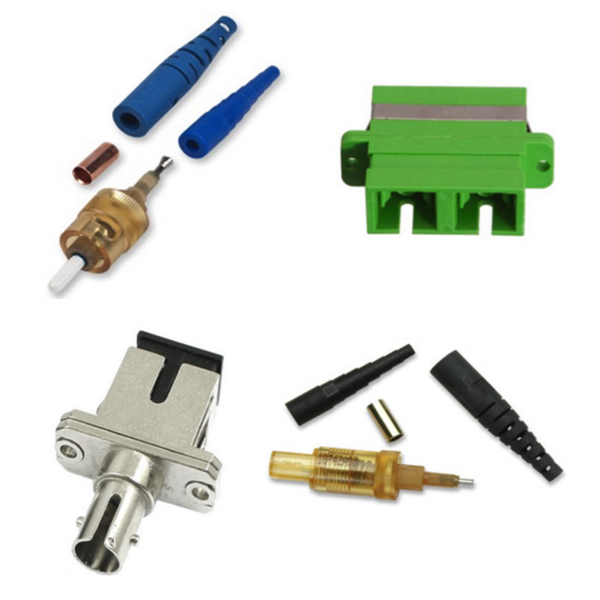Fiber Optic Accessories

Fiber optic accessories are specially designed products that support the connectivity, termination, and maintenance of fiber optic cable systems. Common to these accessories are fiber optic connectors, patch panels, and strain relief solutions. These products are available in several styles, accommodating the various types of cables in existence.
Termination points for fiber cables must be secure and reliable. Fiber optic connectors fulfill this critical function. They are also very efficient, especially in the case of the high-speed connections that underpin our data infrastructure.
Patch panels serve as a link between many fiber cables, performing the necessary order and signs that permit the directing of light paths into and out of many kinds of interconnected equipment. Their primary job in networks is to organize cables by, for example, marking destinations for incoming paths of light and outgoing paths of light. Is there a point? Oh, yeah; patch panels make fiber networks and light paths work well together in confined areas like the nation's thousands of data centers.
Protecting the delicate fibers of a fiber optic installation from being damaged due to bending, pulling, or twisting is the fundamental purpose of strain relief hardware—the collection of accessories specifically made for that task. Because strain relief is so crucial to system performance, the components used must match that performance.
FAQs
What line of accessories can be used with multimode cables?
A comprehensive line of accessories is available to support the installation and operation of multimode cables. These may include: patch panels, adapters, cable management, tools, power meters and strain relief.
What is the best way to extend a fiber cable?
The best way to extend a fiber cable is by using a fiber optic splice or a fiber optic patch panel to securely join two fiber cables while maintaining signal integrity and minimizing loss.
Industrial Wire Types: Part 2
Twisted Pair Wire
Twisted pair wire is most commonly seen in scenarios where data is being transfer to and from certain locations. It uses two separate conductors, twisted together, for a single circuit. The two conductors are twisted together to reduce electromagnetic interference or “cross talk” between the two wires. It is common to use twisted pairs in place of a coax cable for data transfer. Coax can be fairly expensive and can be more difficult to run whereas twisted wire is not as thick or rigid and can easily be maneuvered in tough to reach locations. Twisted wire will always come in pairs, but there are no limits to how many pairs can be included in a single cable. For instance, CAT5 or CAT6 cable, which is commonly used in home and office networks, uses twisted pair wire. This type of cable has four different pairs of communication lines.
Shielded Wire
Shielded wire is different from regular wire insulation in that it is made of a conductive material. This conductive material includes, braided strands of copper (or other types of metal), non-braided aluminum and copper tape. The purpose of this shielding is to protect the signal passing through the wire from any outside interference. Unlike twisted cable, which is trying to eliminate interference among wire being used in the same circuit, shielded wire needs protection from outside interference and from other electrical circuits in the area.
Tray Cable
Tray Cable is a factory assembly of two or more insulated conductors, with or without associated bare or covered grounding conductors under a nonmetallic sheath, for installation in cable trays, in raceways, or where supported by a messenger wire. It is common to see tray cable that has many different conductors that can be used for control wiring, instrumentation and signal wiring as well as many other applications. Tray cable is often rated for use in direct sunlight applications, as well as direct burial applications. Because of the potential weight of tray cable when suspended, it will need to be supported properly to avoid hazardous environments.

